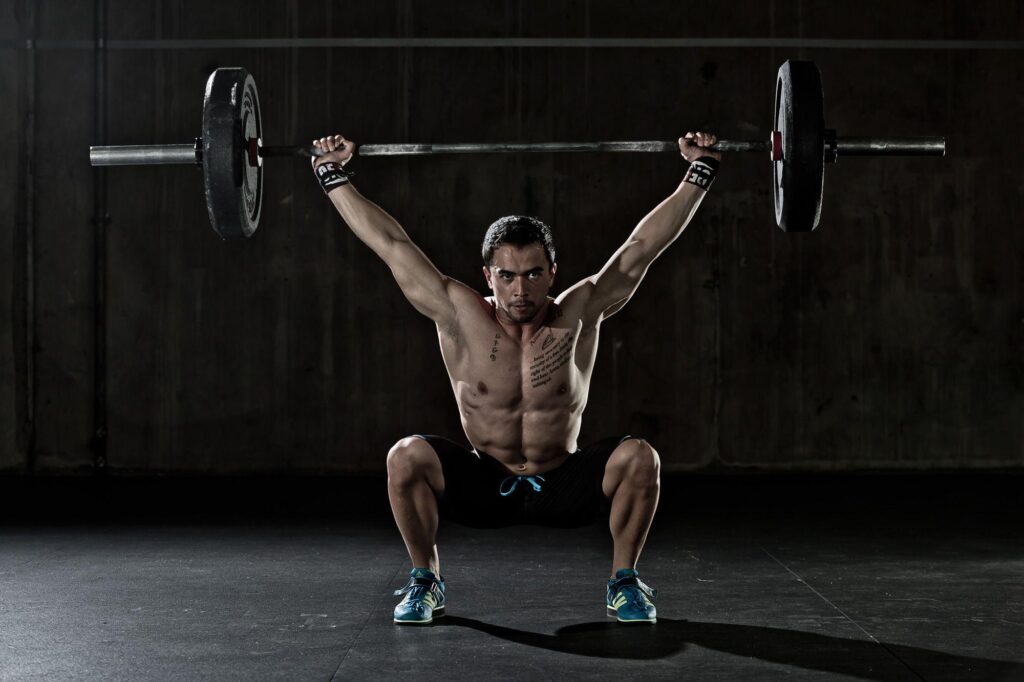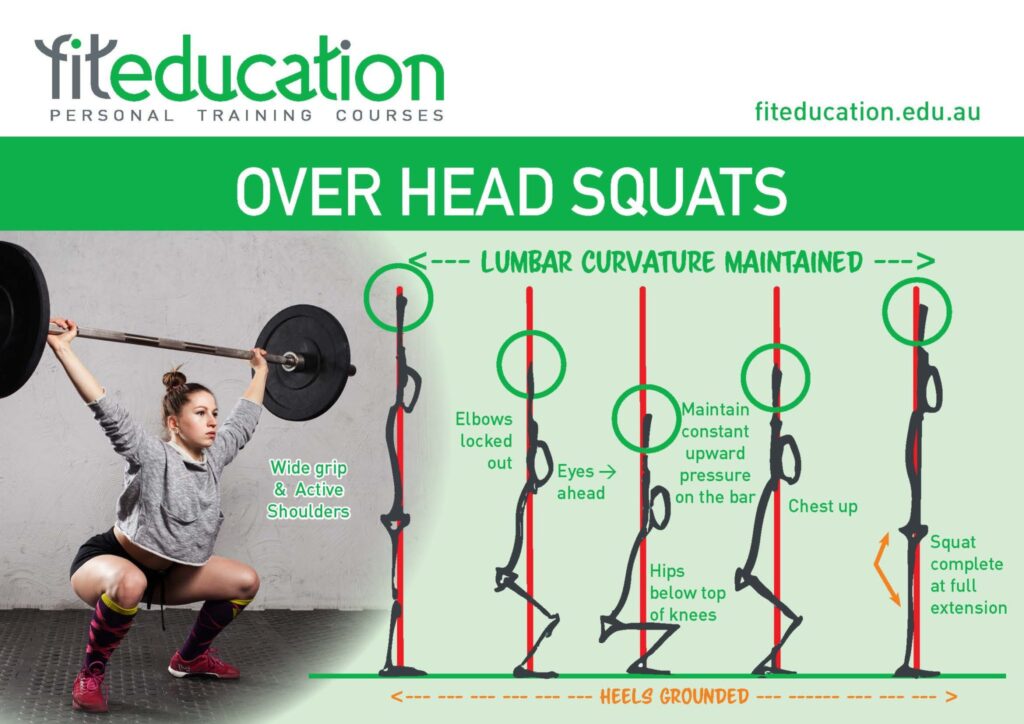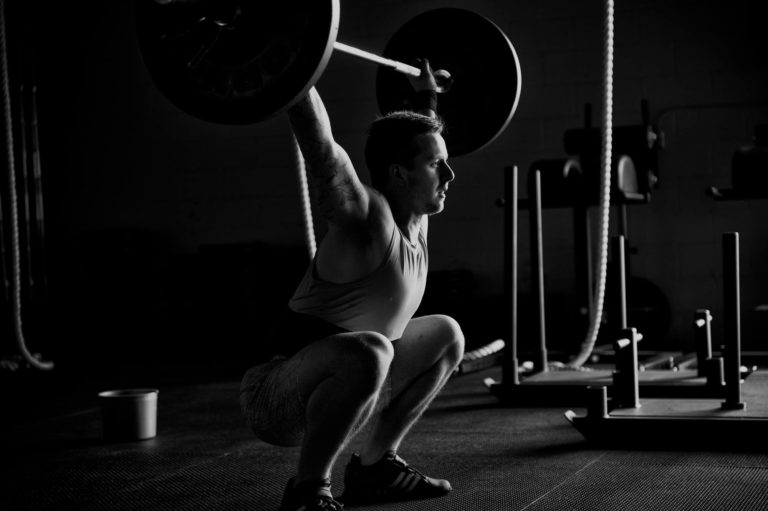The overhead barbell squat is an advanced exercise that requires strength in the legs, and stability of the shoulders and core. It mobilizes the thoracic spine, ankles, and hips, and improves the bottom of a squat, front squat, or snatch.
Muscles Worked – Overhead Squat
The primary muscle groups targeted by the overhead squat are:
- Shoulders: The shoulders work in the overhead squat to keep the barbell overhead (with the assistance of the triceps) and stable throughout the entire movement. The shoulders work in an isometric fashion to stabilize the load overhead.
- Quadriceps: The quadriceps are the prime mover in the overhead squat. Due to the vertical torso positioning, the lifter must go into deeper knee flexion, requiring them to ascend with higher amounts of knee extension to remain in position (rather than allowing the hips to push back, shifting weight into the hamstrings).
- Trapezius: The trapezius muscles (upper traps) provide stability and strength while the load is overhead. Without adequate trapezius engagement and barbell placement, the shoulders are stressed excessively.
- Core: The abdominals, (rectus abdominis, transverse abdominis and obliques) and lower back are all involved in stabilizing the lifter as they (1) support a load locked out overhead, (2) as they move throughout the full range of motion in the overhead squat, and (3) to remain braced and stable in the bottom of the overhead squat.

Step-by-Step Instructions
1. Establish Position
Start with the barbell placed overhead, with the grip set wide. The grip is typically taken with a snatch grip, however this can vary based on the goal, client’s mobility, and strength. The key is that the barbell should be placed over the back of the neck, with the biceps in line with the ears. The wrists should be slightly extended, with the elbows straight and ribs pulled in (neutral spine).
2. Begin Descent
During the descent be sure not to extend the lumbar spine, but rather keep the core braced and the hips neutral (as opposed to anterior or posterior tilting of the pelvis). This squat should be patterned in the same manner as a high bar back squat.
3. Maintain Control and Position
Once full depth is reached (slightly different for everyone), the hip crease should be slightly below the knees, with the full foot down. The lifter should keep the core tight and be actively push against the barbell to keep it into the correct positioning overhead (step one).4. Drive Up and Stand
From here, work to keep the barbell overhead and the chest up ascending out of the squat. Keep the core tight and actively push up against the barbell to aid in standing up from the overhead squat.5. Stabilize and Repeat
Once the knees and hips are fully extended, stabilize the core and shoulders and repeat for repetitions. Keep the upper back and shoulders stable by actively pressing upwards through the barbell.

Overhead Squat Variations
Below are three (3) overhead squat variations that you can use:
Pause Overhead Squat
The pause overhead squat is similar to other pause squat variations, and it is a great way to increase control, core stability, and balance in the bottom of the squat. In addition, it will teach lifters to remain engaged with the core and upper back muscles when paused and challenge them to increase concentric strength getting out of the squat.
Tempo Overhead Squat
Similarly, the tempo overhead squat echoes other tempo squat variations. By exercising at set cadences, individuals can increase time under tension. Additionally, it can enhance a lifter’s control over movement and strength in specific positions. Moreover, it can help address sticking points or technical breakdowns in the overhead squat movement.
Clean Grip Overhead Squat
The clean grip overhead squat is an overhead squat with a clean grip (you can do it with a jerk grip) versus a wider grip, like the one taken in a snatch. As a matter of fact, the narrower the grip, the more overhead mobility you need. In addition, narrowing the grip will increase upper back, shoulder, and trapezius involvement.

Check out these other resistance training exercises:
- Face Pull
- Bench Press
- Turkish Get Up
- Front Squat.
- Shoulder Press – Standing Barbell
- Deadbug – Abdominal Exercise
- Monster Walk
- Overhead Squat
- Battle Rope
- Goblet Squat
- Swiss Ball Hamstring Curl
- Seated Cable Row
- Ab Roller
Learn more about resistance training by studying a Cert 3 in Fitness, Cert 4 in Fitness, or Diploma of Fitness with Fit Education.
